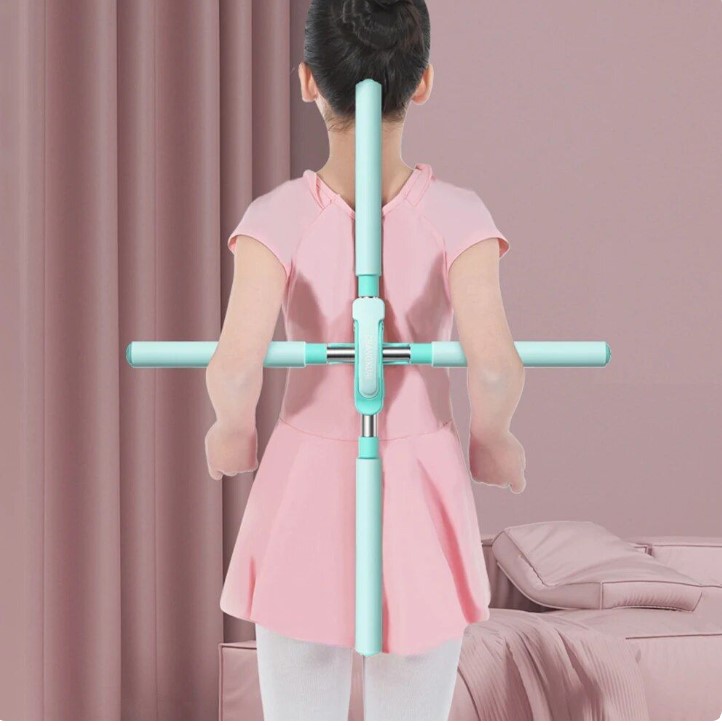Cultivating Serenity in Corporate Chaos: The Rise of Office Meditation

Welcome to the world of office meditation, where finding peace in the daily grind becomes a reality! In this modern age, workplace stress has become a prevalent challenge for professionals. The relentless demands of the corporate world take a toll on both physical and mental well-being, leading to burnout and reduced productivity. Thankfully, there is a beacon of hope shining through the chaos – meditation. This ancient practice is not just confined to serene retreats; it has now found its way into our office spaces, offering a tranquil sanctuary amidst the hustle and bustle. With simple techniques and a mindful environment, employees are finding solace and rejuvenation right at their desks, transforming the workplace into a hub of serenity and focus.
1. Understanding Workplace Stress
Hey there, let’s delve into the world of workplace stress and its impact on our daily lives. In today’s fast-paced professional landscape, stress has become a familiar companion for many of us. From looming deadlines to demanding workloads, the effects of workplace stress can be far-reaching, affecting not only our performance but also our overall well-being. It’s essential to recognize how stress can manifest physically and mentally in the workplace. Physical symptoms like headaches, fatigue, and muscle tension often result from prolonged stress, while mentally, it can lead to anxiety, mood swings, and a decrease in concentration. By acknowledging these signs, we can take steps to mitigate and manage stress more effectively, creating a healthier work environment for everyone.
The Effects of Work-Related Stress
Let’s take a moment to understand the impact of work-related stress, a common challenge affecting professionals worldwide. Prolonged stress in the workplace can lead to a range of physical and mental consequences, creating a significant impact on our overall well-being. Physically, individuals may experience a variety of symptoms, including tension headaches, muscle pain, gastrointestinal issues, and even increased susceptibility to illnesses due to weakened immune systems. Such manifestations are clear indicators of the toll that stress takes on our bodies. Mentally, the effects can be equally burdensome, leading to feelings of anxiety, irritability, and a decline in cognitive function, which can hinder our ability to perform optimally at work. Understanding these consequences is the first step in addressing and alleviating the challenges presented by work-related stress, leading to a healthier and more balanced professional life.
Statistics and Research on Workplace Stress
Let’s delve into the world of statistics and research on workplace stress, providing insights into the latest data and studies to understand its prevalence and impact in professional environments. Recent research has shed light on the pervasive nature of workplace stress, revealing its profound impact on employees across various industries. Studies indicate that a significant percentage of employees experience high levels of stress in the workplace, which not only affects their mental and physical well-being but also hampers overall productivity. Understanding these statistics is vital in addressing the root causes of stress and implementing effective strategies to create healthier work environments. By acknowledging the prevalence and impact of workplace stress through data-driven research, organizations can tailor interventions to support their employees’ well-being, ultimately fostering a more conducive and harmonious workplace.
2. Integrating Meditation: A Mindful Solution

Welcome to the realm of meditation, where finding serenity in the midst of chaos becomes a tangible reality. Embracing meditation as a tool for stress relief offers a holistic approach to addressing the challenges of modern professional life. With the profound benefits it brings, meditation has become a powerful ally in promoting overall well-being in the workplace. By integrating meditation practices, employees gain access to a range of advantages, including reduced stress, enhanced focus, and improved emotional resilience, ultimately leading to heightened productivity and a more harmonious work environment. Through its mindful embrace, meditation acts as a transformative force, empowering individuals to navigate work-related challenges with a sense of calm and clarity.
Benefits of Meditation in the Workplace
Discovering the benefits of meditation in the workplace unveils a treasure trove of advantages that contribute to enhancing overall well-being. Through the practice of meditation, employees gain access to a myriad of benefits that extend far beyond the realm of personal wellness. One of the most notable advantages is stress reduction, as meditation equips individuals with the tools to manage and alleviate the pressures commonly associated with professional life. Moreover, the enhancement of focus and concentration stands out as a significant advantage, empowering employees to navigate their tasks with heightened clarity and efficiency. Additionally, meditation fosters emotional resilience and a greater sense of empathy, which in turn cultivates a more supportive and empathetic work culture, benefiting both individuals and the organization as a whole.
Simple Meditation Techniques for Office Settings
Incorporating simple meditation techniques into the hustle and bustle of office life offers a gateway to tranquility and renewed focus amidst the daily demands. With the right approach, meditation can seamlessly integrate into a busy work schedule, becoming an accessible resource for employees navigating the complexities of their professional lives. Mindful breathing exercises stand out as a cornerstone of office meditation, serving as a quick and effective way to center oneself throughout the day. By simply taking a few moments to focus on the breath, individuals can swiftly recalibrate their mindset and alleviate stress. Another practical technique lies in the realm of visualization, where employees can engage in brief, imaginative exercises to foster a sense of calm and clarity, even in the midst of a hectic workday. These approaches, among others, empower individuals to weave moments of peace and mindfulness into their daily routines, ultimately enhancing their overall well-being and productivity.
3. Creating a Meditation-Friendly Office Environment
Creating a meditation-friendly office environment involves weaving elements of serenity and focus into the fabric of the workplace, nurturing a space where employees can rejuvenate and replenish their energy. The design of the office plays a crucial role in promoting a conducive environment for meditation. Incorporating natural elements such as plants, natural light, and comfortable seating arrangements infuses the workspace with a sense of calm and tranquility, fostering a welcoming atmosphere for meditation. Additionally, designated meditation areas or quiet zones offer employees a dedicated space to retreat and engage in mindfulness practices, free from the distractions of their daily tasks. Cultivating an environment that encourages and supports meditation transforms the office into a sanctuary where individuals can find solace and renewal amidst their professional endeavors.
Designing a Mindful Workspace
Designing a mindful workspace entails infusing the office environment with elements that foster relaxation and sharpened focus, nurturing a space where employees can thrive both professionally and personally. Natural lighting plays a pivotal role in creating a serene atmosphere within the workspace, contributing to improved mood and overall well-being. Introducing elements of nature, such as indoor plants and greenery, not only enhances the aesthetic appeal of the office but also provides a calming, rejuvenating effect. Ergonomic furniture and comfortable seating arrangements promote physical relaxation, reducing the potential for discomfort and enhancing the overall work experience. By incorporating these elements, organizations can cultivate an environment that supports the holistic well-being of their employees, fostering a harmonious and productive work culture.
Encouraging Mindful Breaks and Practices
Encouraging mindful breaks and practices involves fostering a workplace culture that values and supports the well-being of employees through moments of rejuvenation and mindfulness. By promoting the integration of brief, mindful breaks throughout the workday, organizations demonstrate their commitment to prioritizing the holistic health of their workforce. Encouraging employees to engage in meditation, deep breathing exercises, or even short walks during breaks can significantly contribute to alleviating stress and enhancing overall focus. Moreover, establishing a culture that embraces mindfulness communicates an understanding of the importance of mental well-being, empowering employees to achieve a healthier work-life balance.
4. Supporting Workplace Well-being Through Meditation
Supporting workplace well-being through meditation is a transformative approach that empowers employees and elevates overall performance. By integrating meditation into the professional environment, organizations demonstrate their commitment to fostering a culture of holistic health and well-being. This proactive approach not only aids in stress reduction but also contributes to enhanced focus, creativity, and emotional resilience within the workforce. By providing resources such as meditation spaces, mindfulness programs, and educational workshops, employers actively contribute to the overall well-being of their employees, ultimately cultivating a more harmonious and productive work environment. Embracing meditation as a supportive tool for well-being showcases an organization’s dedication to nurturing a workforce that is not only successful in their professional endeavors but also balanced and fulfilled in their personal lives.
Leadership and Mindful Practices
Leadership plays a pivotal role in fostering a workplace culture that embraces mindfulness and meditation, thereby contributing to a healthier and more harmonious work atmosphere. When management actively promotes and participates in mindful practices, it sends a powerful message to employees about the significance of well-being in the workplace. By setting an example and openly advocating for mindfulness and meditation, leaders create a supportive environment where employees feel encouraged to prioritize their mental health. Moreover, leadership involvement in these practices helps reduce the stigma often associated with prioritizing mental well-being in professional settings, ultimately creating a more inclusive and compassionate work environment. By recognizing the importance of mindfulness and meditation in their own routines and advocating for these practices, leaders can positively influence the overall well-being and performance of their teams.
Measuring the Impact: Success Stories and Case Studies
Measuring the impact of meditation in the workplace through success stories and case studies offers a glimpse into the transformative power of mindfulness practices. Real-world examples showcase how organizations have leveraged meditation to positively influence workplace culture and productivity. For instance, companies have reported a reduction in employee burnout, higher job satisfaction, and improved focus and creativity following the implementation of meditation programs. Success stories often highlight how meditation has contributed to a more cohesive and empathetic work environment, fostering stronger team collaboration and a deeper sense of purpose among employees. Additionally, case studies have illustrated how the incorporation of mindfulness practices has led to quantifiable benefits, such as reduced absenteeism and enhanced overall productivity, offering compelling evidence of the tangible impact of meditation in professional settings.
How can meditation help me at work?
Meditation can help you at work by reducing stress, improving focus and concentration, enhancing emotional resilience, and promoting overall well-being. Regular practice of meditation has been shown to increase productivity and creativity while also fostering a more harmonious work environment.
I don’t have much time at work. Can I still benefit from meditation?
Absolutely! Even brief meditation sessions during work breaks can offer significant benefits. Simple mindfulness exercises, deep breathing, or a short walk can help you recharge and refocus amidst a busy workday.
How can I convince my employer to support meditation in the workplace?
You can share relevant research and success stories showcasing the positive impact of meditation on workplace culture, productivity, and employee well-being. Additionally, propose small-scale initiatives such as mindfulness workshops or designated meditation spaces to demonstrate the potential benefits.
Is meditation only for certain types of professionals?
Meditation is for everyone, regardless of job role or industry. Its benefits extend to all professionals, offering a way to manage stress, enhance focus, and nurture overall well-being, irrespective of the nature of their work.




